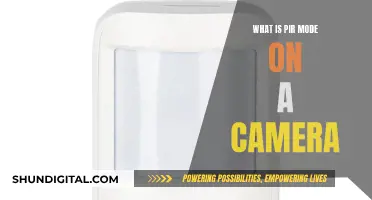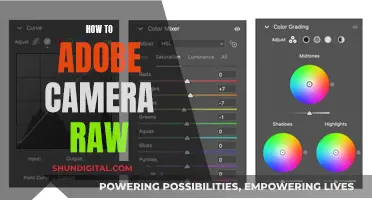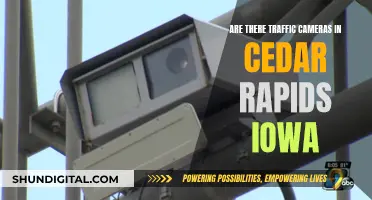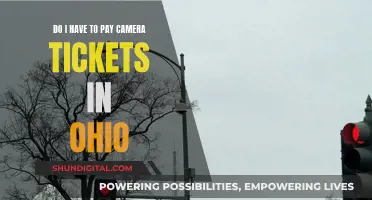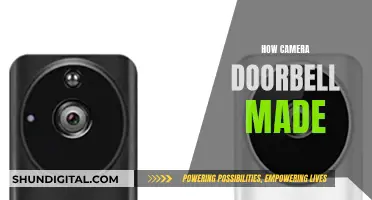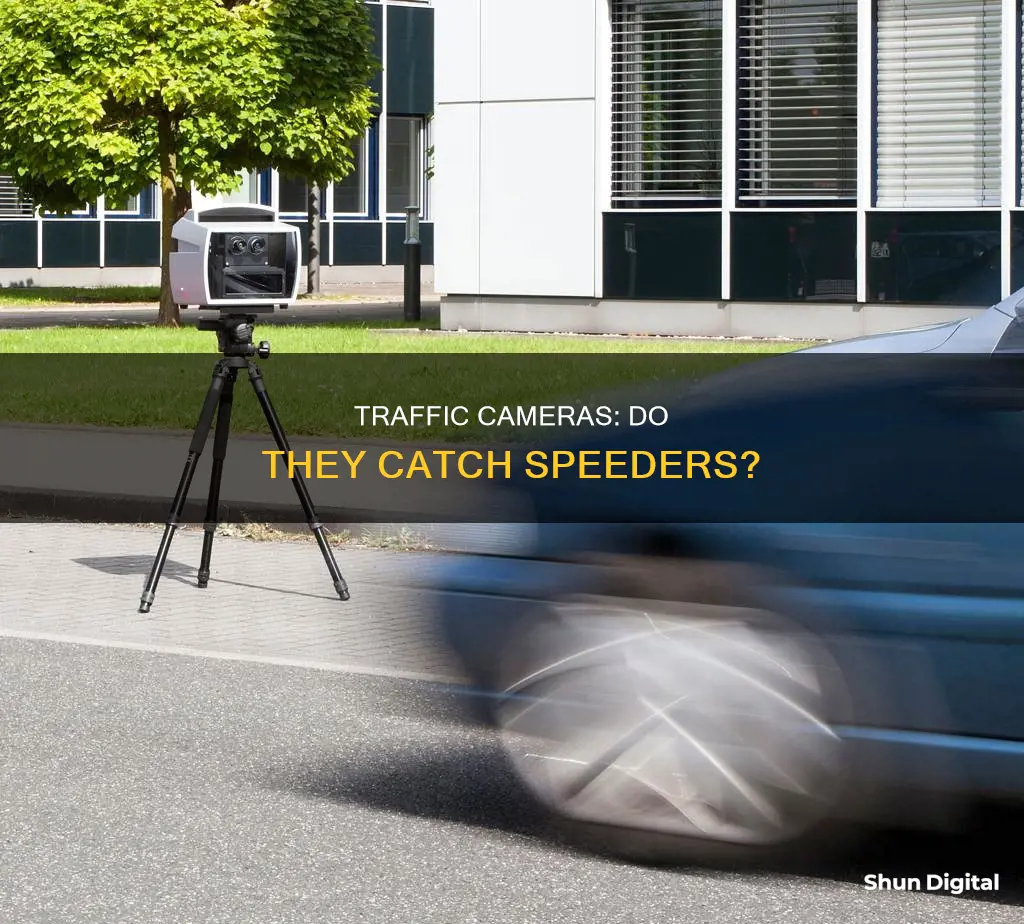
Traffic cameras are an increasingly common feature of roads in many countries, and they are used to enforce traffic laws. The two most common types are red light cameras and speed cameras. Red light cameras are set up at intersections to catch drivers who run the signal, while speed cameras are usually set up near school zones or areas where drivers often exceed the speed limit. The data from these cameras suggests that they are effective at reducing accidents and injuries, but they are also controversial, with some motorists concerned about privacy and the potential for governments to use them for mass surveillance.
| Characteristics | Values |
|---|---|
| Purpose | Detect and deter speeding |
| Functionality | Utilise radar equipment to capture images and/or videos of vehicles exceeding the speed limit |
| Data Recorded | Speed of the vehicle, date, time, location, and vehicle's license plate number |
| Placement | Near school zones, construction zones, or areas where speeding is prevalent |
| Warning Signs | Required in some jurisdictions, placed within a certain distance of the camera |
| Ticketing Process | Semi-automated; a police officer reviews footage and decides whether to issue a citation |
| Ticket Recipient | Registered owner of the vehicle |
| Penalties | Vary by jurisdiction; typically include fines, and may include points on the driver's record |
| Effectiveness | Studies show a reduction in speeding and collisions in areas with speed cameras |
| Privacy Concerns | Potential for mass surveillance of vehicle and owner movements |
| Legality | Varies by jurisdiction; some states prohibit, some allow with restrictions, and some do not address |
What You'll Learn

Speed cameras reduce speeding and crashes
Speed cameras are a type of automated enforcement technology used to detect speeding and red-light runners. They are controversial in the United States, with some states outlawing their use. Despite this, speed cameras have been shown to be effective in reducing speeding and crashes.
A speed camera program in Montgomery County, Maryland, has led to long-term changes in driver behavior and substantial reductions in deaths and injuries. The program, which began in 2007, has resulted in a 59% reduction in the likelihood of a driver exceeding the speed limit by more than 10 mph compared to similar roads in nearby counties without speed cameras. The cameras have also resulted in a 19% reduction in the likelihood of a crash involving a fatality or incapacitating injury.
A similar program in Barcelona, Spain, found that speed cameras were effective in reducing the number of road collisions and the number of people injured. After two years of speed camera operation, there was a significant decrease in the number of road traffic collisions, not only on the roads with cameras but also on the arterial roads without them. The relative risk of a road collision occurring after the installation of speed cameras was 0.73, indicating a protective effect.
A study in Phoenix, Arizona, however, found that the placement or removal of speed cameras did not independently affect the incidence of motor vehicle collisions. There was a slight increase in collisions when the cameras were placed (1.5%) and a larger increase when the cameras were removed (28%). However, this study only examined a small segment of interstate and did not take into account other factors such as traffic volume and seasonal changes.
Overall, speed cameras have been shown to be effective in reducing speeding and crashes, leading to long-term changes in driver behavior and making roads safer for everyone.
Hide Your Camera: Use a JPG Instead
You may want to see also

Red-light cameras are triggered when a vehicle enters an intersection
Traffic cameras are an effective way to reduce speeding and deter dangerous driving behaviour. While they are widely unpopular with motorists, they have been proven to reduce fatalities and speeding tickets.
Red-light cameras are a type of traffic camera that specifically targets vehicles running red lights. They are installed at high-risk intersections, often those that have experienced several serious crashes caused by drivers running red lights. These cameras are triggered when a vehicle enters an intersection, but only after the traffic light has turned red. In other words, if a vehicle is already in the intersection when the light turns red, the camera will not be activated.
The camera will take two pictures and record 12 seconds of video, capturing the date, time, and intersection location. The images are then reviewed by a police officer, who determines whether a violation occurred. The registered owner of the vehicle will then receive a ticket in the mail, along with a fine. It's important to note that the process and penalties vary depending on the state and local laws.
In some cases, red-light cameras can also be used to detect speeding, capturing the speed of the vehicle and the local speed limit. This dual functionality is usually indicated by specific signage.
Charger Lost? Here's How to Power Your Camera
You may want to see also

Traffic cameras are controversial
Traffic cameras are a highly controversial topic. While some people advocate for their use as a means to improve road safety and reduce speeding, others argue that they are an invasion of privacy and a way for governments to conduct mass surveillance.
Proponents of traffic cameras argue that they are an effective tool for law enforcement to monitor and enforce traffic laws, such as speeding, running red lights, or illegal toll crossings. They also claim that traffic cameras can help reduce the number of accidents and save lives, as supported by several studies. For example, a worldwide review of studies found that speed cameras led to an 11% to 44% reduction in fatal and serious injury crashes. Additionally, the British Medical Journal recommended the wider deployment of speed cameras due to their effectiveness in reducing accidents and injuries.
On the other hand, opponents of traffic cameras raise concerns about the loss of privacy and the potential for governments to conduct mass surveillance of vehicle movements, which could also indirectly track the movements of the vehicle's owner. This surveillance aspect has been criticized by groups such as the American Civil Liberties Union, who claim that the use of speed traps as a revenue source undermines the legitimacy of safety efforts.
The use of traffic cameras also varies across different states and jurisdictions, which can lead to inconsistencies in their effectiveness. For instance, while some states allow the use of traffic cameras, others prohibit them entirely, or impose certain restrictions on their use. This variation in legislation can make it challenging for motorists to understand their rights and the potential consequences of traffic violations captured by these cameras.
Furthermore, the implementation of traffic cameras has led to debates regarding the role of technology in law enforcement. Some people argue that the absence of human interaction during a traffic stop may result in missed opportunities to identify other crimes, such as impaired driving or plain view searches. Additionally, there have been concerns about the accuracy of traffic cameras, with some instances of erroneous citations being issued, including to stationary vehicles.
In conclusion, while traffic cameras have the potential to improve road safety and reduce speeding, their use remains controversial due to privacy concerns, inconsistent legislation, and questions about their accuracy and effectiveness as a law enforcement tool.
Finding Dehaze in Camera Raw: A Quick Guide
You may want to see also

Traffic ticket camera laws vary by state
The use of traffic ticket cameras is a highly controversial topic, with many states enacting legislation permitting, limiting, or prohibiting their use. While some states have banned their use, others have allowed local governments to set up individual camera programs within their jurisdiction.
Alabama
Alabama permits the use of speed cameras within specific jurisdictions, such as Center Point and Midfield. Red light cameras are also permitted under the Red Light Running Camera Implementation Guide.
Arizona
Arizona permits the use of cameras to enforce speed limits and red lights, provided it complies with state standards.
Arkansas
Arkansas prohibits the use of speed and red-light cameras except in limited circumstances: school zones, railroad crossings, and highway work zones when a police officer is present.
California
Beginning in 2024, California will allow speed camera programs in some cities. Red light cameras are already permitted in the state.
Colorado
Colorado permits the use of red light and speed enforcement cameras but only in limited circumstances.
Connecticut
In Connecticut, local governments are allowed to use automated traffic enforcement systems.
Delaware
Delaware has a five-year trial period that permits the use of speeding cameras in specific jurisdictions. Red light cameras are also permitted in the state.
Florida
Florida permits traffic law enforcement through the use of cameras, however, no city or county uses them. Red light cameras are in use, and tickets usually cost $158, increasing to $262 if unpaid after the first notification.
Georgia
Georgia allows the use of speed detection devices and also permits red light cameras.
Hawaii
Hawaii has a pilot program that allows red-light safety cameras at select intersections.
Illinois
Illinois permits the use of red light cameras if there is a local ordinance in place.
Indiana
Indiana has a pilot program that allows speed cameras in limited road worksites.
Iowa
Some areas of Iowa, such as Council Bluffs, operate programs for speed enforcement and red light cameras under local ordinances.
Louisiana
Louisiana permits the use of traffic cameras for speed enforcement and red lights through local ordinances. Signs must be visible where cameras are active, and convictions from camera enforcement do not become part of a person's driving record.
Maine
Maine prohibits traffic surveillance cameras except for toll monitoring systems. Red light cameras are permitted in work zones and school zones by local ordinance.
Mississippi
Mississippi prohibits the use of automated recording equipment to enforce traffic laws.
Missouri
Missouri permits the use of speed and red-light cameras in local traffic enforcement programs. However, the Missouri Supreme Court ruled that such programs are unconstitutional unless the state has proof of the driver's identity at the time of the offense.
Nevada
Nevada prohibits speed and red light cameras with limited exceptions. Traffic cameras must be installed in the vehicle or facility of a law enforcement agency or be hand-held by a police officer.
New Hampshire
New Hampshire prohibits most types of highway surveillance systems.
New Jersey
New Jersey prohibited red light camera enforcement following the end of its automated traffic enforcement pilot program.
New Mexico
New Mexico bans the use of traffic cameras on state and federal roads, but localities may use them.
New York
New York limits speed cameras to school zones. Some jurisdictions, such as Suffolk County, can create local ordinances to use red light cameras.
North Carolina
North Carolina permits the use of red light cameras in specific jurisdictions.
Ohio
Ohio permits the use of traffic cameras for speed enforcement or red light violations, but a police officer must be present.
Oregon
Speed cameras are allowed in Oregon if they comply with state statutes. Cities can use red light camera programs if they follow state laws.
Pennsylvania
Pennsylvania permits the use of automated speed cameras in work zones and red light cameras in cities with a population of more than 20,000, provided there is a local ordinance in place.
Rhode Island
Rhode Island permits the use of speed cameras in school zones and red light cameras for traffic violation detection systems.
South Carolina
South Carolina prohibits the use of traffic cameras to issue citations except in emergencies.
South Dakota
South Dakota prohibits the use of speed and red-light cameras for traffic enforcement.
Tennessee
Traffic cameras are permitted in Tennessee.
Texas
Texas prohibits the use of red light and speeding traffic enforcement cameras.
Utah
Utah prohibits traffic cameras with limited exceptions: in school zones or roads with speed limits of 30 mph or less, when a police officer is present, and when a local ordinance allows their use.
Virginia
Virginia only permits speed cameras in school zones and work zones. Red-light running cameras are permitted if there is a local ordinance.
West Virginia
West Virginia prohibits the use of camera systems for traffic enforcement.
Wisconsin
Wisconsin prohibits the use of speed radar cameras.
The Everlasting WiFi Camera: Maximizing Battery Life
You may want to see also

Traffic cameras can be avoided or become ineffective
Traffic cameras are an effective way to enforce speed limits and improve road safety. However, there are ways in which they can be avoided or become ineffective in serving their purpose.
Firstly, it is important to note that not all speed cameras are operational. In the UK, for example, some speed cameras have been confirmed as non-functional through Freedom of Information requests. This means that drivers may intentionally or unintentionally speed past these cameras without receiving any penalties.
Secondly, average speed cameras, which enforce speed limits over longer stretches of road, can be outsmarted by drivers who slow down when passing the camera and then speed up again. While this practice is dangerous and illegal, it can reduce the likelihood of being caught by a fixed camera that captures speed at a single point in time.
Additionally, some drivers have resorted to using illegal methods to avoid detection by traffic cameras. For instance, the use of "James Bond-style rotating number plate covers" has been reported as a way to avoid traffic fines. While this practice is unlawful and can result in serious consequences if discovered, it demonstrates the lengths to which some individuals will go to avoid being caught by traffic cameras.
Furthermore, the effectiveness of traffic cameras can be limited by jurisdictional factors. For instance, in the United States, the use of speed cameras is regulated at the state level, with some states permitting their use, while others prohibit or do not specifically address their use. This inconsistency in regulations can create opportunities for drivers to evade speed cameras by travelling through areas where their use is prohibited or not enforced.
Lastly, while it is not a widespread issue, technical malfunctions or errors in the camera system can render them ineffective. For example, a case was mentioned where a van driver overturned a speeding fine by exposing an "unfortunate error" with the speed camera. While this may not be a common occurrence, it highlights the potential for technical failures that can result in speeding violations going unpunished.
Focusing Your GoPro: Tips for Crisp, Clear Shots
You may want to see also
Frequently asked questions
Traffic cameras use automated enforcement technology to detect and record traffic violations. The two most common types are red-light cameras and speed cameras. Red-light cameras are triggered when a vehicle enters an intersection above a minimum speed after the signal has turned red. Speed cameras, on the other hand, use radar to detect vehicles exceeding the speed limit and capture their speed, location, and license plate details.
The placement of traffic cameras varies. Red-light cameras are typically mounted on poles at intersections, facing the middle. Speed cameras are often placed near school zones, construction sites, or areas with frequent speeding issues. Some states or cities may have specific restrictions or requirements for their use.
If a traffic camera detects a violation, a citation or ticket is usually mailed to the registered owner of the vehicle. The procedures vary by jurisdiction, but typically, a police officer will review the footage to verify the violation before issuing a ticket. The penalties for camera-issued tickets are generally less severe than those for traditional citations, often resulting in a fine without any points added to the driver's record.
Yes, it is possible to contest a camera-issued ticket. Most states allow the registered owner of the vehicle to provide evidence that they were not the driver or to dispute the violation. The process for fighting a ticket may vary, and specific instructions are usually provided on the ticket.


